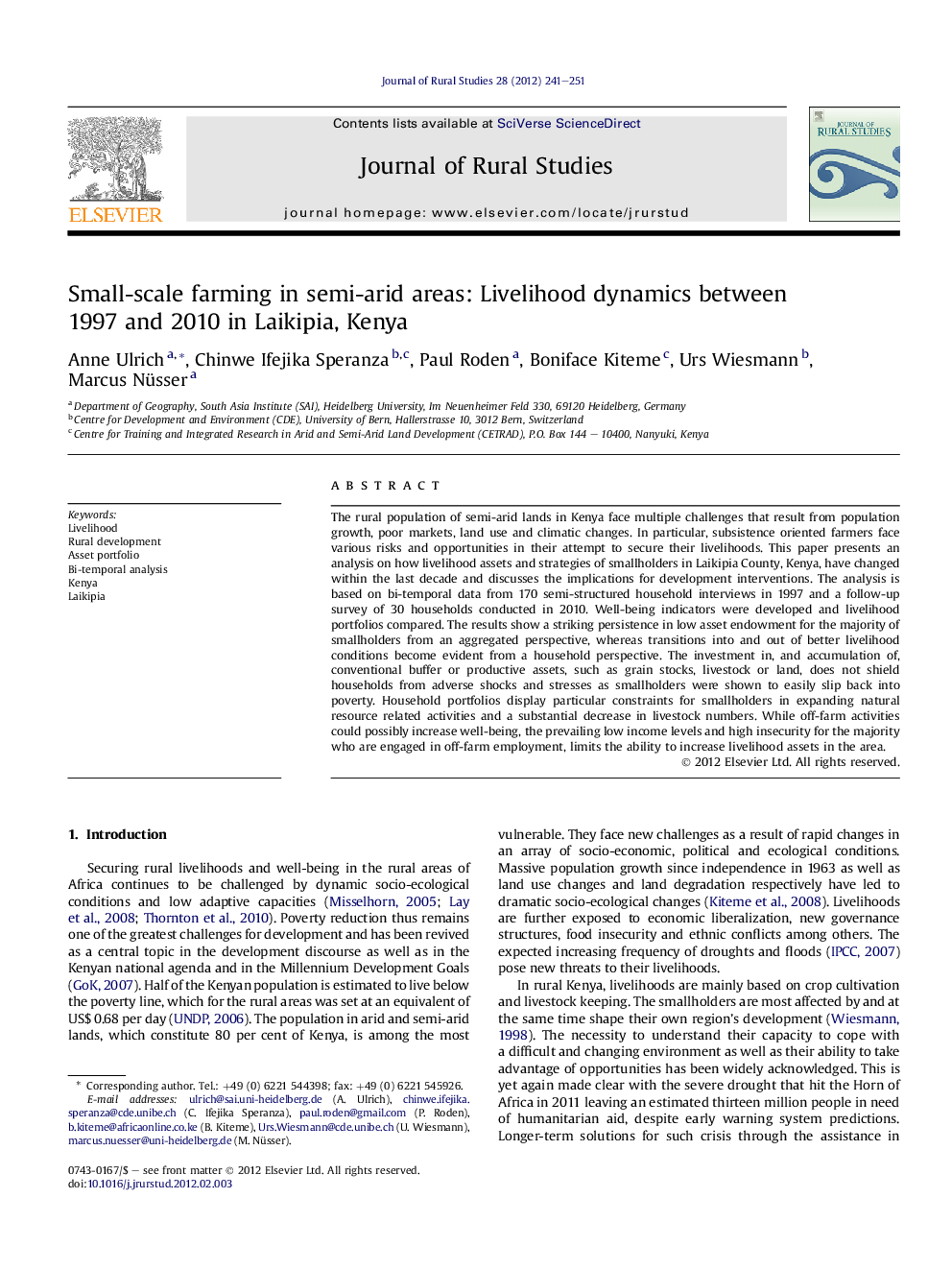| Article ID | Journal | Published Year | Pages | File Type |
|---|---|---|---|---|
| 92673 | Journal of Rural Studies | 2012 | 11 Pages |
The rural population of semi-arid lands in Kenya face multiple challenges that result from population growth, poor markets, land use and climatic changes. In particular, subsistence oriented farmers face various risks and opportunities in their attempt to secure their livelihoods. This paper presents an analysis on how livelihood assets and strategies of smallholders in Laikipia County, Kenya, have changed within the last decade and discusses the implications for development interventions. The analysis is based on bi-temporal data from 170 semi-structured household interviews in 1997 and a follow-up survey of 30 households conducted in 2010. Well-being indicators were developed and livelihood portfolios compared. The results show a striking persistence in low asset endowment for the majority of smallholders from an aggregated perspective, whereas transitions into and out of better livelihood conditions become evident from a household perspective. The investment in, and accumulation of, conventional buffer or productive assets, such as grain stocks, livestock or land, does not shield households from adverse shocks and stresses as smallholders were shown to easily slip back into poverty. Household portfolios display particular constraints for smallholders in expanding natural resource related activities and a substantial decrease in livestock numbers. While off-farm activities could possibly increase well-being, the prevailing low income levels and high insecurity for the majority who are engaged in off-farm employment, limits the ability to increase livelihood assets in the area.
► Bi-temporal approach to assess livelihood dynamics via asset portfolios. ► Persistence of asset endowment at a low level from an aggregated perspective. ► Fluctuation in smallholder well-being from a household perspective. ► Uncertainty of labour markets and minimal wages hinder improvement of livelihoods. ► Conditions under which livestock can be kept have worsened.
